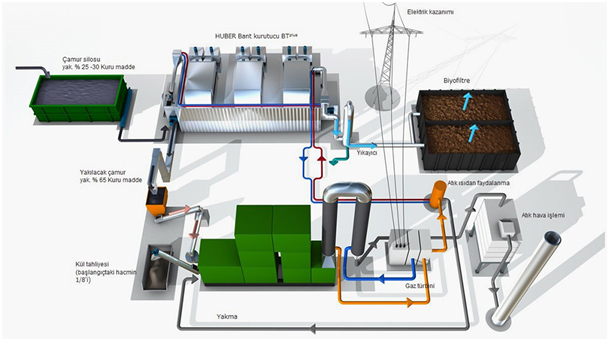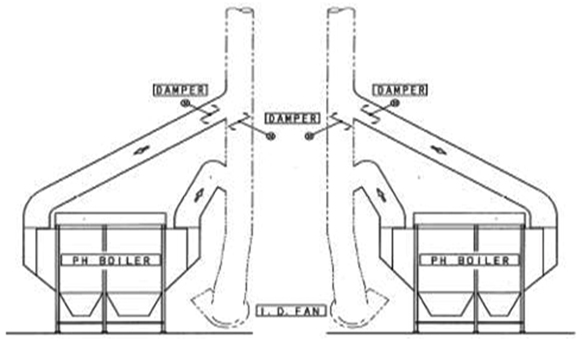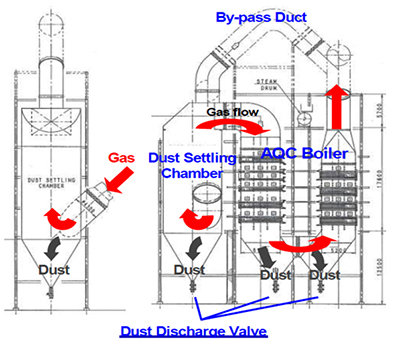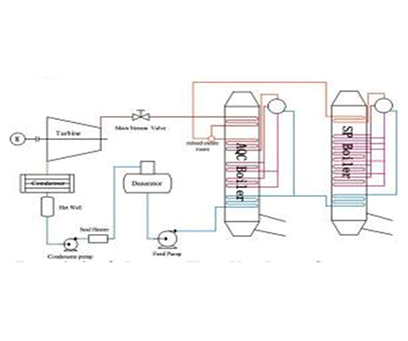Waste Heat Power Plants
Atık Isı Enerji Santralleri (WasteHeatRecovery)
Part of the heat is used for the realization of the processes that in to be heating processes such as iron and steel and glass industry, especially in the cement sector. The remaining part is discarded by different methods and especially is discharged through flue gas. Normally these hot gases are thrown into the atmosphere but we can used to generate electricity with the WHR system. So we can generate electricity with free fuel and also have behaved more environmentally sensitive.
The use of thermal and electrical energy is quite high in the cement sector, which is one of the most established sector in our country. 60-70% of cement production costs are energy costs. As a result for this; Sustainable practices should be realized in order to use energy efficiently in our country. In these studies; energy etudes, performance evaluation of mechanical equipment, application of process optimization systems, use of high efficiency motors, energy optimization with frequency conveyors, use of alternative fuels and raw materials, increasing the use of additive, energy recovery projects from waste heat are very important and studies on electricity generation are continuing.
Thermal energy is used intensively in the clinker production process, which is a semi-product in the production process of cement. The concept of energy production by recovering the heat of the resulting waste hot gases has been started to evaluated since 2008 on a sectoral basis and as of the second half of 2011, it has been started to implemented in the first facilities. In the literature, the term WHR, which is the abbreviation of Waste Heat Recovery, is widely used. Especially in the cement sector, certain part of the heat produced in the processes such as iron-steel and glass industry, is used for the purpose the realization of the process. The remaining part is mostly discharged through flue gases. With the WHR system, electricity is generated by using the previously heat thrown into the nature. Thus, both economic benefits and environmental sensitivity are provided.
In the WHR system, it is possible to benefit from the energy of the waste gas which has high thermal value with "classical steam" technology and the steam, is producted from "steam boilers". After that, that steam is send to turbine and electric energy is obtained with generator. The water that obtained from turbine output is cooled and send to chemical treatment unit to used again.
WASTE HEAT RERCOVERY

Besides generating electricity from waste heat, dust loads of chimneys decrease significantly in WHR systems and Since fossil sources are not used to generate electricity, carbon dioxide emissions are reduced. If we express it clearly; In the production of electricity 1 kWh, approximately 0.65 kg less CO2 is emitted to the environment.
In the production of clinker, the gas outlet temperature due to the high thermal process differs according to their technological structure. Temperatures range from 280 to 350 degrees after the preheater and 250 - 300 degrees at the clinker cooling outlet and depending on the clinker production capacity, waste hot gases at increasing flow rates are thrown directly into the atmosphere due to they are not reused in the production process in high heat treatment. Gases at this temperature, which are inert in the clinker production process, are an important heat source for the generation of electrical energy based on conventional steam technology. In the clinker production process, one of each rotary kiln process is the preheater tower and the other is the clinker cooling unit. Thus, due to the presence of waste hot gases at two separate points, steam boilers are placed at these points of the system and hot gas is routed. Boilers integrated into the preheater towers are called "SP boiler" and it takes hot gas from system with clact redirects and steam production is carried out. The gas output is given to the ID FAN input. The gas output is given to the ID FAN input again and the raw material is directed to the fan mills for drying purposes.

The temperatures in the preheater outlet are not desirable to completely take the gas heat of the intervening boilers (because raw material is used in grinding mill process due to moisture caused by raw material ). This restricts the use of all waste hot gas in the production of electrical energy. Boilers integrated into clinker cooling units are called "AQC BOILER". The steam is produced by using waste hot gases in the cooling process.
The gases in the output of the boiler isnt used in any process of clinker production and they are discharged to atmosphere. Thus, all of the waste hot gas is used in the process of electricity generation.
The most important element of minimizing high energy costs in energy-intensive cement industry is use energy as efficiently. Therefore; The ability of hot gases obtained from fuels used for clinker production to be evaluated after being used in the process and the applicability of the system is an opportunity for us.


Use of WHR systems; In short, the basic principle for this system is to benefit from the circulation of hot flue gas. In short, the basic principle for this system is to benefit from the circulation of hot flue gas. However, the main factor affecting efficiency is the powdery clinker, etc., which is carried along with the gas flow on the hot flue gas. Generally, there are not many systems to dispose of the ash accumulation in the heat transfer pipes used in waste heat boilers. These pipe bundles are cleaned and maintained according to the general maintenance and repair schedule of the factories. Ash concentrations on finned pipe structures in the economizer lines form a thick layer over time and the heat that will allow the formation of steam by the flue gas is released to the atmosphere. At the same time, it is applied cleaning model with hand that take a long time and expensive method during the stop-times of companies.
By boiler producing companies are used mechanical hammers located in pipelines for prevention of accumulations.
The systems are automatically set and it strikes the pipe bundles sequentially at the cycle times set by the factory. Thus, the ash formations on it are shaken. This effet don't provide enough cleaning in the long pipe bundles. On the other hand, this serial hammer system causes that puncture due to erosion of pipe bundles over time and discharge of dry pressurized steam passing through and that causes it causes the dry pressurized steam passing inside to discharge into the boiler. The steam pass to liquid state in the atmospheric conditions. Then the boiler combines with the clinker powder in the lower bunker (for example). As a result, clinker dust becomes hard and causes blockages at the exit of the bunker. In such cases, repair and cleaning times may take 7 -10 days and these involuntary stops cause serious economic losses.
The situation is different for sonic soot blower. The temperature is not very high in the waste heat boilers we mentioned and deposits are usually made up of powdery micronized particles. Therefore, sonic effect is the most efficient systems can we use. The Sonic system does not pose any burden in terms of installation costs and facility continuity during operation and required for energy efficiency. This investment is very cheap when your plant's downtime, maintenance and energy costs are examined. Also,It can redeem itself in a period of 6 - 10 months According to system's property.
